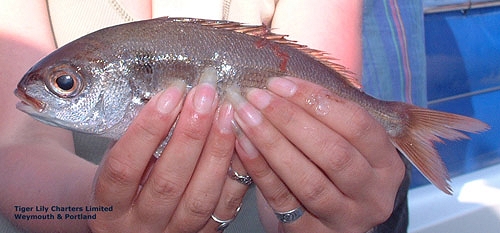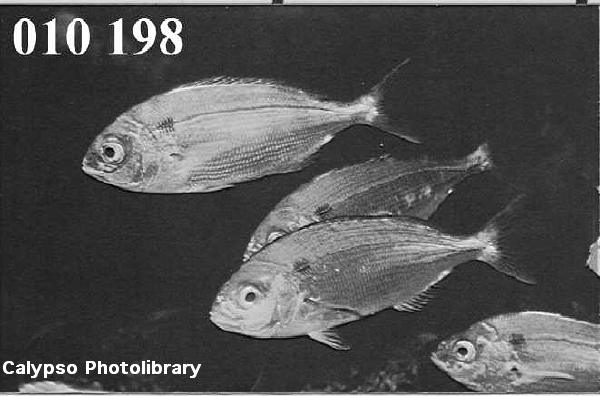Identification:
Deep laterally flattened body, with large scales, that are also present upon
the head. Single long dorsal fin, who's anterior portion is composed of 12
spines, with the posterior formed of 12 to 13 soft branched rays. The anal
fin is approximately half the length of the dorsal fin, and has 3 spines
at it's anterior that is then composed of 12 to 13 branched rays.
The top half of the head and body, along with the fins, has a reddish orange
colouration. This blends into a rose tinged silver of the sides and belly.
The lateral line is distinct, and is accompanied in the adults by a black
to blackish red spot, just behind the gill cover. The gill cover has no spines
and is untoothed.
The eyes are large and are further back than the low set mouth. The front
teeth are small and sharp, with 2 to 3 sets of small rounded blunt teeth
towards the rear.
Breeding:
Spawning occurs in deep water, during the late summer and autumn
Habitat:
Rocks and seaweed's of shallow waters, down to depths of 250M or more. This
tends to be a shoal fish, although the size of the shoals decreases with
age of the fish. Red Bream have a summer inshore migration, and is the commonest
of the sea breams in the UK.
Food:
Diet normally consists of small fish, long with crustaceans, and the occasional
squid.
Range:
Most often seen at the Western end of the Channel, and South West Ireland.
Summer migration however, results in wide spread distribution including the
North Sea and even up to Norway.
Additional Notes:
|

